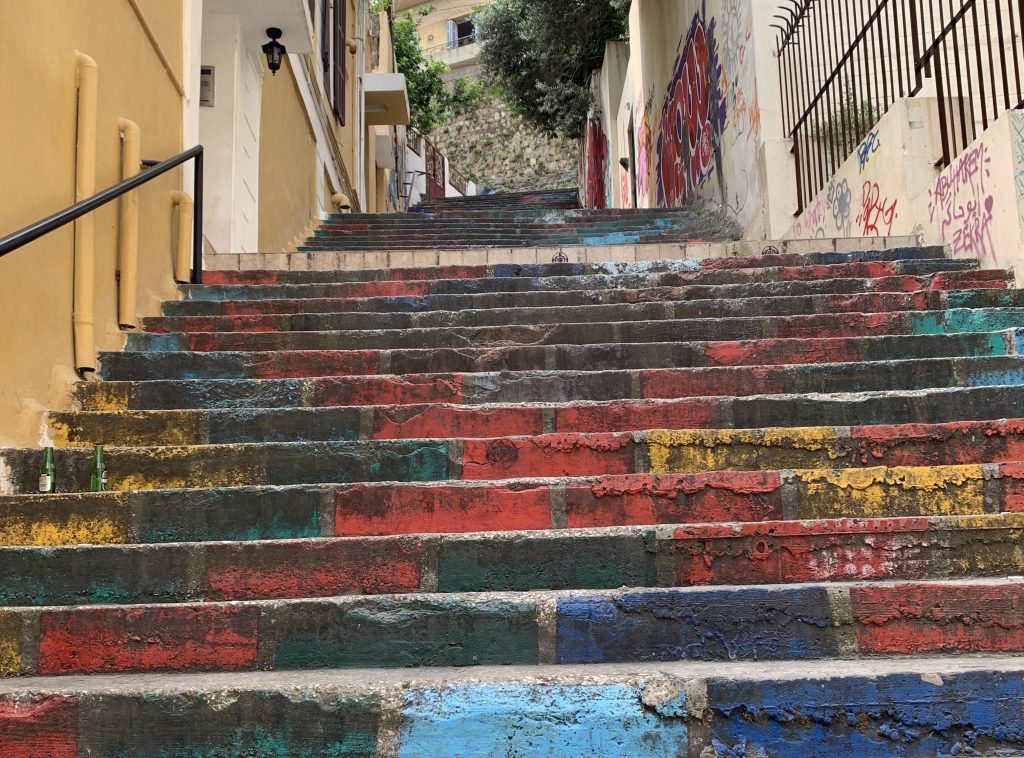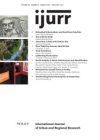What would queering urban studies involve? In this Spotlight On, six authors reflect on this question from different angles. This Spotlight On seeks to draw more attention to the role of LGBTQ+ communities, movements and spaces in shaping urban politics, epistemologies and everyday life. It includes critical assessments of how gender and sexuality connect to spatial, social, economic and political transformations in cities across the world. More broadly, it also asks what critical urban studies has overlooked in its engagement with these issues.
After paying relatively sparse attention to (non-normative) sexuality in its early decades, IJURR has seen a much stronger emphasis emerge over the last decade. Reflecting IJURR’s longstanding interest in urban social movements, early articles were focused on specific forms of collective action. These publications include Elizabeth Ettorre’s 1978 article, which analyzes the “lesbian ghetto” that emerged in the London borough of Lambeth as an urban manifestation of the women’s movement, and Larry Knopp’s 1987 piece on gay and lesbian movements in Minneapolis, which sought to develop a “non-functionalist political-economy perspective” to understand how these movements challenged the capitalist status quo. Specifically, these articles sought to understand such movements as intersecting with – rather than antithetical to – the anti-capitalist struggles that were the focus of much critical urban scholarship, while also recognizing that some forms of activism aligned very neatly with the interests of capital, including processes of gentrification.

Mar Mikhael district, Beirut. Photo: Ghassan Moussawi.
While these analyses of social movements aimed at transforming gender and sexual norms already considered the spatial dimensions of such activism, the 1990s saw an expansion of research on geographies of sexuality, with urban scholars demonstrating a strong interest in “gayborhoods”. In The City and the Grassroots, Manuel Castells (1983) suggested that the spatial concentration of gay men in San Francisco’s Castro district was the basis for their successful political and electoral mobilization, contrasting this with allegedly less “territorial” and therefore less “visible” lesbians. Such assumptions were challenged in an important 1992 article in IJURR by Sy Adler and Johanna Brenner and in various follow-up studies, including a 1997 piece by Ann Forsyth on lesbian space on the semirural fringes of metropolitan areas. This work also pointed out that the “visibility” of minoritized sexual groups also depended on who was looking. This observation is underlined by Ghassan Moussawi in his contribution to this Spotlight – he emphasizes that the type of visible gay presence that many Euro-American outsiders look for in Beirut, and elsewhere in the Middle East, reflects a very homogenous, middle-class White type of visibility. Relatedly, Jen Jack Gieseking nuances those accounts that portend the advent of what he calls “lesbian-queer assimilationist extinction”. The mainstream attention given to the “disappearance” of lesbian bars and parties overlooks a much broader range of lesbian-queer spaces in and beyond cities, including digital spaces such as the recently launched Lex.app (a similar phenomenon to the “disruptive” dating apps described by Andrew D.J. Shield in his recent Spotlight essay).
Urban studies of non-normative sexuality often tend to frame the city as a space of liberation. This not only misidentifies rural areas as gay purgatory, a “metrocentric” geographical imagination that Gordon Waitt and Andrew Gorman-Murray seek to complicate in their 2011 article, and that the Spotlight essays by Gieseking and Rae Rosenberg also critique. In addition, as Gill Valentine and Tracey Skelton point out in their 2003 article, urban lesbian and gay “scenes” are themselves paradoxical spaces. Focusing on British cities, they found that these scenes play an important and positive role in the “coming out” process of young lesbians and gay men, offering social commitment in a form that enabled transitions to adult sexual identities. Yet these can also be risky spaces for young people, who may be vulnerable to sexual coercion and to the pressure to conform to hegemonic forms of sexual identity, in addition to being exposed to homophobic violence.
That cities are not only havens for those questioning sexual and gender norms, but also landscapes of significant danger, is emphasized by various contributions to this Spotlight. Where early urban scholarship on gays and lesbians tended to remain largely within a framework of gendered dualism, these contributions highlight the especially vulnerable position of trans persons. In his essay, Rae Rosenberg draws our attention to the violent murders of trans, non-binary, and gender non-conforming people, and particularly Black transgender women. Like Moussawi, Rosenberg points out that visible queerness is a privilege that racialized, low-income and trans populations often cannot access. Yet collective organization calling out violence and discrimination against trans, non-binary, and gender non-conforming is growing. Rosenberg points to recent mobilizations in Toronto against transphobic speakers, while Kian Goh’s contribution to this Spotlight discusses the emergent movement for sex work decriminalization in New York. Goh draws our attention to frequently overlooked but urgent connections between urban labor and sexuality, and shows how such connections encourage us to consider migrant rights and livelihood struggles as key concerns for queer activism.
Goh’s analysis, like that of the other essays, urges us to attend carefully to how the urban political economy intersects with embodied identities. Indeed, a common theme is that, in addition to identifying urban structures of heteronormativity, we should also be mindful over the various forms of homonormativity at work in urban landscapes as in urban scholarship – dominant representations of queer urban life too often center on White, middle-class, cisgender gay men. As Kira Kosnick’s 2015 article on the construction of queer-Muslim antagonisms in Berlin, such skews pit minoritized populations against each other. In their contribution to this Spotlight, Jinthana K. Haritaworn highlights queer and trans Black, Indigenous and people of color projects of urban mapping and archiving, which counter the trope of the racialized homophobe and contest the violent co-optation of queerness by homonationalism and neoliberalism.
As various (urban) scholars have pointed out, the concept of queering goes beyond troubling established norms of gender and sexuality. It refers more broadly to disrupting normative urban structures, including those related to late capitalism, colonialism, racism and xenophobia; to deconstructing binary logics such as rural/urban and nature/culture; and to imagining and enacting more fluid, unclassifiable, non-normative ways of being, loving, working and creating, for instance by redefining kinship and property in the ballroom community’s notion of “house”. This need to think queer space beyond LGBT space is a point underlined by Natalie Oswin’s essay within this Spotlight. She highlights the ways that heteronormative notions of time and space cut across “all manner of intimate relations, domesticities, proprieties and productive relations”, shaping exclusionary forms of urban politics and urban studies. Yet Oswin also insists on the continued potential of radical queer politics, on the possibility of thinking and enacting the city otherwise.
One direction in which critical urban studies – and not least IJURR – might move, in terms of developing such queer urban thought, is through forging connections to debates on diversifying the geographies of theory. While our analyses of queer urban life now attend to a much broader range of non-normative possibilities than a few decades ago, these studies continue to do so in a rather limited number of cities. As Ghassan Moussawi’s piece illustrates (and others have discussed elsewhere), queering urban studies will also involve decentering Western European and North American models of both urban liberation and oppression.
As with earlier Spotlight On issues, we highlight articles previously published in IJURR that connect to the topic. Connecting these previously published pieces to the new web essays presented here, we hope to encourage new conversations on the urban struggles surrounding minoritized sexual and gender identities and practices, and to identify new and critical opportunities for queering our cities and our scholarship.
Rivke Jaffe
IJURR Web Editor
December 2019
All essays on Queering Urban Studies
Introduction
Rivke Jaffe
The Fraught Nature of Exceptional Gay Spaces
Ghassan Moussawi
A Tale of Two Lexes: a Lesbian-Queer Anti-Assimilationist Approach to Queering Space
Jen Jack Gieseking
Queer Regenerations of Violence, from Berlin to Toronto
Jin Haritaworn
For the City ‘Not Yet Here’
Natalie Oswin
Sex Work is Urban
Kian Goh
Into and Beyond Death: Considering Transgender Justice in Urban Studies
Rae Rosenberg
Related IJURR articles on Queering Urban Studies
Women, urban social movements and the lesbian ghetto
Elizabeth M. Ettorre
Social theory, social movements and public policy: recent accomplishments of the gay and lesbian movements in Minneapolis, Minnesota
Lawrence Knopp
Gender and space: lesbians and gay men in the city
Sy Adler and Johanna Brenner
“Out” in the Valley
Ann Forsyth
Finding oneself, losing oneself: The lesbian and gay “scene” as a paradoxical space
Gill Valentine and Tracey Skelton
Journeys and returns: Home, life narratives and remapping sexuality in a regional city
Gordon Waitt and Andrew Gorman‐Murray
LGBTQs in the city, queering urban space
Yvonne P. Doderer
Relational Comparison and LGBTQ Activism in European Cities
Jon Binnie
LGBT neighbourhoods and “new mobilities”: Towards understanding transformations in sexual and gendered urban landscapes
Catherine J. Nash and Andrew Gorman‐Murray
“Wilding” in the West Village: Queer space, racism and Jane Jacobs hagiography
Johan Andersson
The trouble with flag wars: Rethinking sexuality in critical urban theory
David K. Seitz
A clash of subcultures? Questioning Queer–Muslim antagonisms in the neoliberal city
Kira Kosnick
Urban political ecologies and children’s geographies: Queering urban ecologies of childhood
Laura J. Shillington and Ann Marie F. Murnaghan
Urban politics as the unfolding of social relations in place: The case of sexually transmitted disease investigation in mid‐twentieth‐century gay Seattle
Larry Knopp, Michael Brown, and Will McKeithen
© 2019 THE AUTHOR. INTERNATIONAL JOURNAL OF URBAN AND REGIONAL RESEARCH, PUBLISHED BY JOHN WILEY & SONS LTD UNDER LICENSE BY URBAN RESEARCH PUBLICATIONS LIMITED
This is an open access article under the terms of the Creative Commons Attribution-NonCommercial-NoDerivs License, which permits use and distribution in any medium, provided the original work is properly cited, the use is non-commercial and no modifications or adaptations are made.
